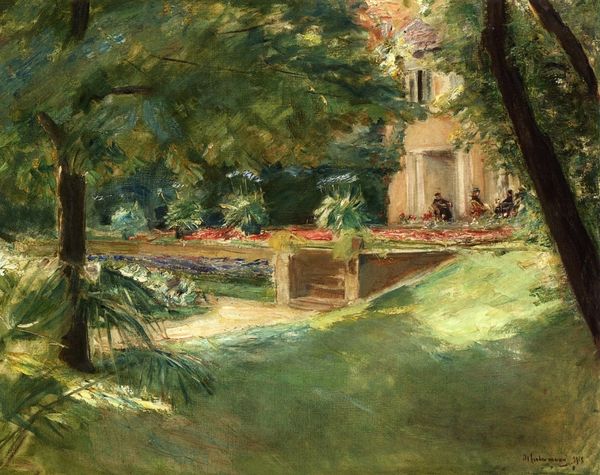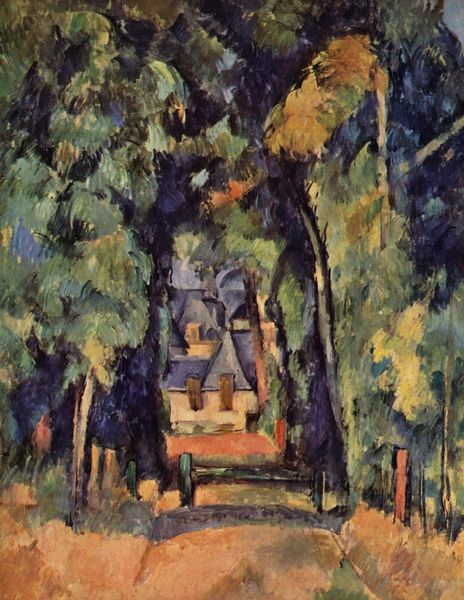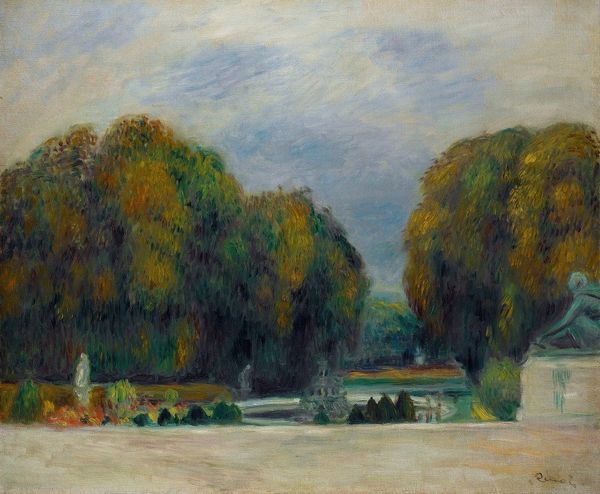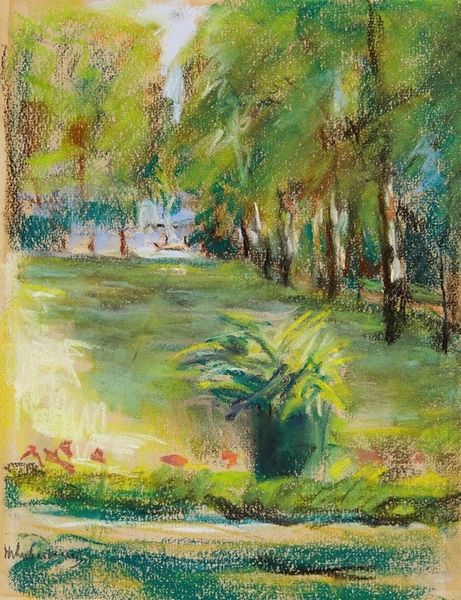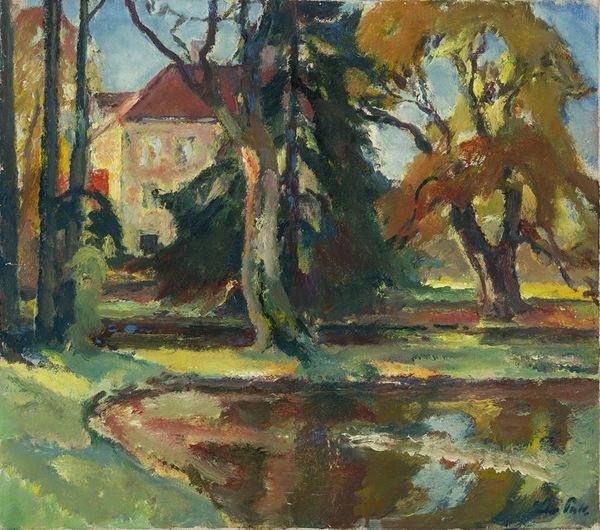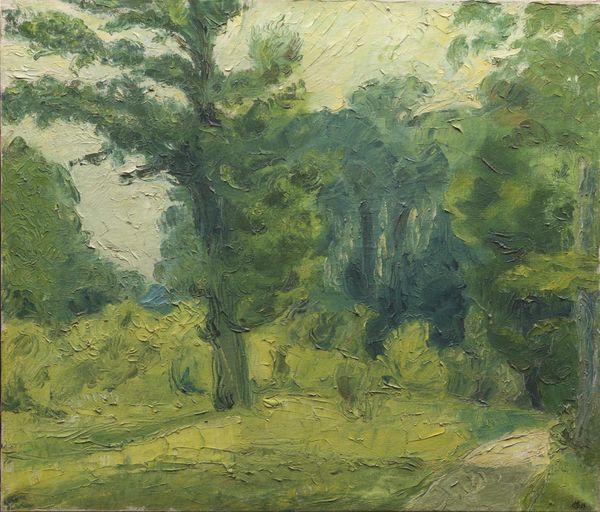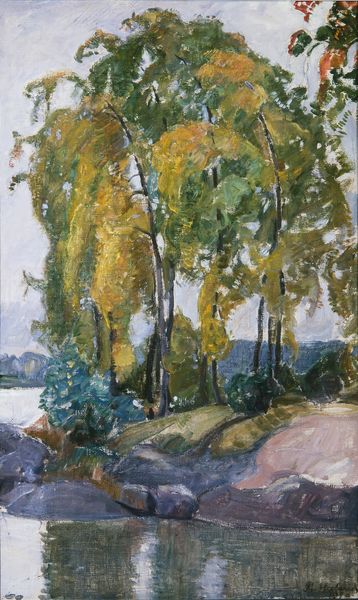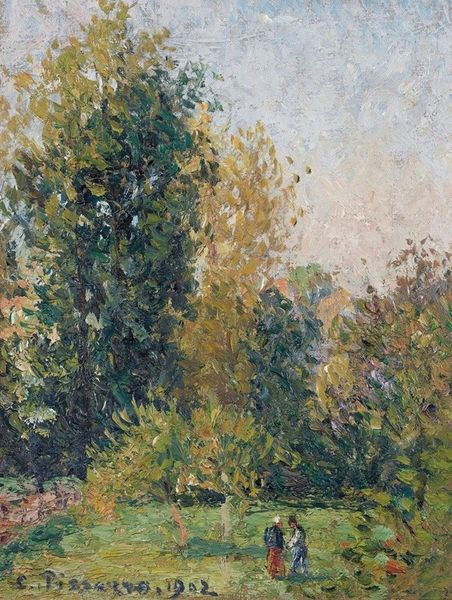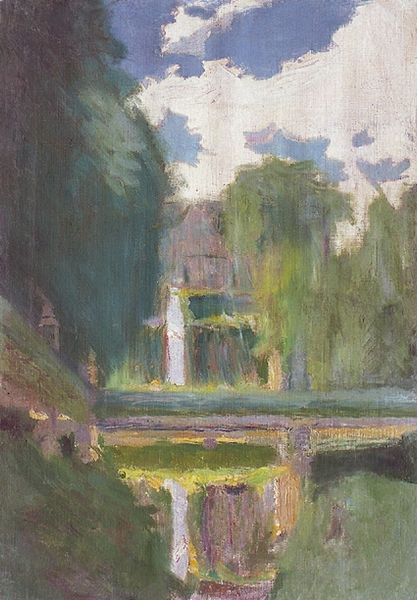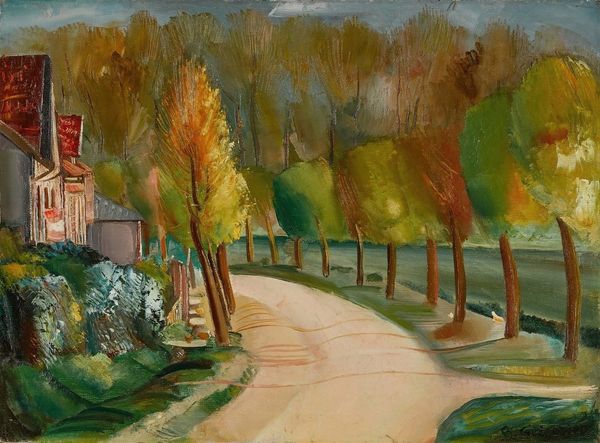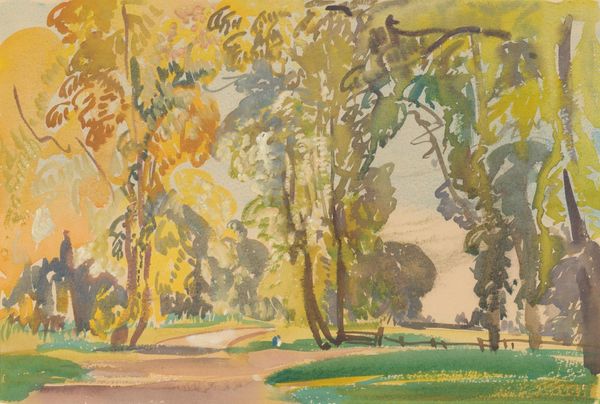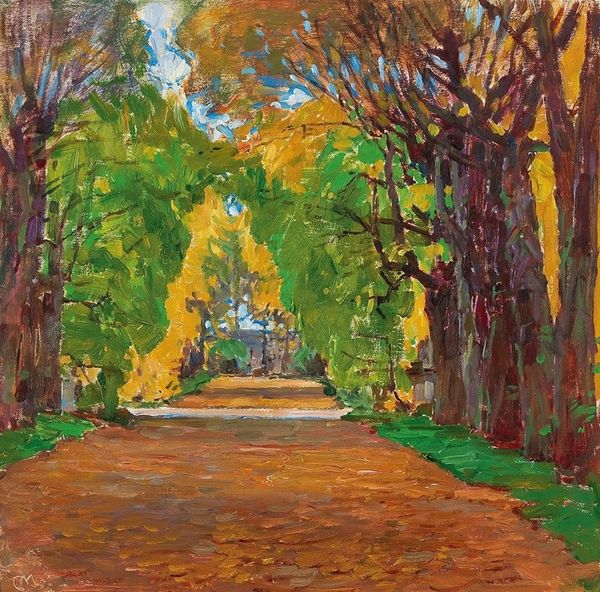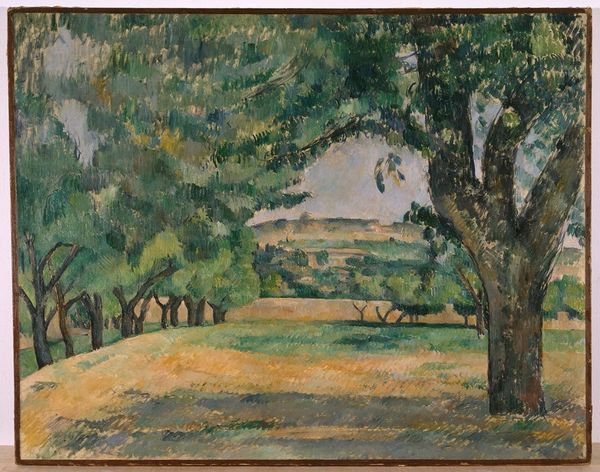
oil-paint
#
canvas painting
#
oil-paint
#
landscape
#
german-expressionism
#
impressionist landscape
#
oil painting
#
post-impressionism
Copyright: Public Domain: Artvee
Editor: This is "Park in Kosen," a 1906 oil on canvas by Edvard Munch. I'm immediately drawn to the way the light filters through the trees. What’s your take on how this work situates itself within its time? Curator: Given its context, the piece becomes a study in bourgeois comfort under pressure. Kosen, now Bad Kösen, was a popular spa town, a place for the wealthy to 'take the waters.' The relaxed, almost dreamlike park scene masks the increasing social and political anxieties simmering beneath the surface of Europe at the time. Editor: Anxieties? In a park? How do you mean? Curator: Well, consider the style. While aesthetically pleasing, it leans toward German Expressionism – a movement rooted in anxieties about modernity, industrialization, and the increasing alienation of the individual. The loosely defined forms suggest an instability, a world not quite holding together perfectly. Even a seemingly idyllic setting is tainted by the undercurrents of unease of the period. The use of light and shadow becomes less about pure Impressionistic observation, and more about the psychological effect on the viewer. It evokes a sense of introspection. What kind of public do you imagine visited art like this? Editor: That's fascinating. So it's less about just painting a pretty picture, and more about showing what's going on under the surface of society? I hadn't thought about it that way. This period produced great thinkers! Curator: Exactly. By understanding its place within the societal currents and artistic movements of the time, “Park in Kosen” becomes so much more than a simple landscape. It becomes a mirror reflecting the tensions and anxieties of a society on the cusp of enormous change.
Comments
No comments
Be the first to comment and join the conversation on the ultimate creative platform.
